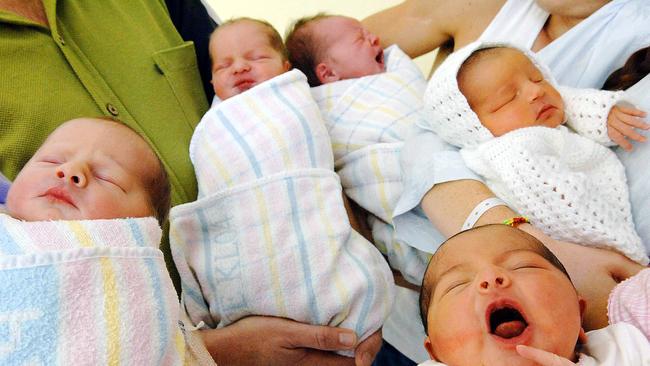Slow population growth adds to age-old problem
Covid-19 has reduced fertility and stopped migration, leading to a population outflow this year and next, the latest AIHW report finds.

Covid-19 is speeding up the ageing of the Australian population, which was already an economic concern before the pandemic.
International border closures have stopped migrants, who tend to be younger than Australia’s national average, from arriving.
And the rate at which Australian women are having babies is expected to slow due to the economic uncertainty caused by the pandemic and the restrictions imposed to try to control it, the latest Australian Institute of Health and Welfare report on welfare says.
These factors, along with a rise in annual deaths because the population is older, have seen population growth fall to its lowest annual rate in a century, the AIHW report finds.
“The demographic shock caused by the Covid-19 pandemic is accelerating the existing ageing challenge,” it states.
“Future population growth is projected to remain positive but slow over the next few years, falling from 1.3 per cent last observed in 2019-20 to 0.1 per cent in 2020-21 and 0.2 per cent in 2021-22.
“(This) would be the lowest annual rates of growth since zero per cent recorded in 1916-17.”
Australia is in the midst of a population outflow, losing almost 100,000 people in 2020-21. And it is forecast to lose another 77,000 people in 2021-22.
Treasury forecasting projects that the population will bounce back to be increasing by 235,000 people in 2024-25.
The AIHW report warns that net overseas migration is critical to long-run population growth.
“In the absence of any net overseas migration, Australia’s population growth would turn negative within one generation, given fertility remains below replacement rates,” it states.
While some had hoped Covid-19 lockdown restrictions might lead to a mini baby boom, the reality is that couples are influenced by economic imperatives in their decisions to have a child.
“Restrictions and economic uncertainty brought on by the Covid-19 pandemic are expected to contribute to lower future fertility as some families delay decisions to have children,” the AIHW report states.
The total fertility rate is assumed to fall from 1.65 babies per woman in 2019-20 to 1.58 babies per woman in 2021-22.
It is then projected to bounce back a little to 1.69 in 2023-24 as the economy recovers from the pandemic, before stabilising at 1.62 by 2030-31.
Australia’s overall population is projected to reach 29.1 million by 2032.




To join the conversation, please log in. Don't have an account? Register
Join the conversation, you are commenting as Logout